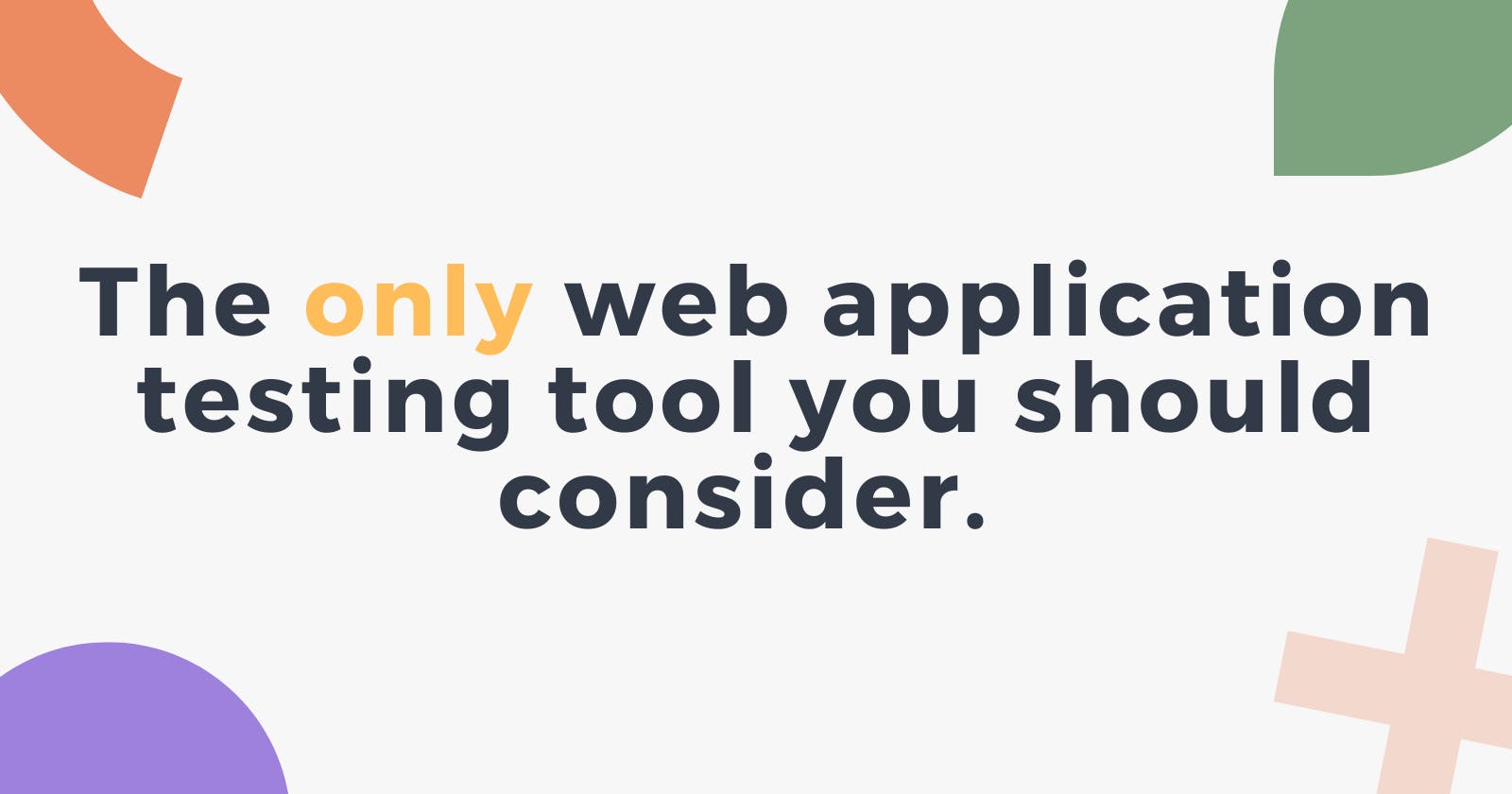The only web application testing tool you should consider
Why cypress.io is the best testing tool available
Intro
When developing a large-scale web application, UI testing is an essential part of the process. Unfortunately, writing tests is often viewed as a tedious and time-consuming task, so many teams avoid it altogether. I can't blame developers for not wanting to write tests. Over the past 15 years, I have worked with a large variety of testing tools, and I can say without any double that almost all of them provide a terrible, unfun development experience.
Forcheanlty for us, there is one testing tool that saves the situation and makes writing test fun.
cypress.io is the king of all testing tools
I will explain why cypress.io is much better than all other testing tools out there and why this tool can cover all your testing needs.
Why is Cypress so Amazing?
When I test a new UI testing tool, I always check if the tool can provide me with the following capabilities:
An easy visual way to query elements
An easy visual way to debug
Consistent results
An easy API
Because of Cypress's unique architecture, he can provide all of those. And I'm unfamiliar with any other tool that can provide the same.
Example: Cypress allows you to have a visual playground where you can test what will be the result of each query by highlighting the DOM elements of the component under test.

This is the best game-changer feature of Cypress. The ability to visually see the query is amazing. It makes writing tests faster and easier for debugging.
What are the problems with other tools?
I divide the other UI testing tools into two categories:
Tools that simulate DOM
Some testing tools simulate the DOM during the execution of the tests and not interacting with a real browser. The idea behind this approach is to make the test run faster. But the disadvantage of this is that you don't see what you are querying and running visually. All your interaction with the component under tests is using the terminal, so in case of a broken test, it will be extremely hard to understand why.
Such testing tools are useless, in my option. You can use them to create very simple tests, but in practice, you will struggle a lot to create tests for complex UI components.
Tools that can interact with a real browser
There are a lot of such tools, but all of them have the same disadvantages compared to Cypress. When a testing tool can control the browser from the outside, it doesn't know what is happening inside the browser during the execution of the test.
Common problems with such tools:
You query an element, but you don't see the expected result. It is very easy to send the wrong query to the browser. Then you will need to guess why it is not working as there is no visual indication (especially hard when you will need to fix a failing test). Cypress solved this problem by visually showing an indication that you are querying, so you will never need to guess why the test is not working. You always have a visual indication of each execution step.
Get Inconsistent results after each execution. It is a huge problem, especially in end-to-end tests, as it takes a different time for the DOM to react on every execution.
For example: If your test sends a "Click" command to an element, your next command should run only once the DOM is updated after the click, but how the testing tool will know when? The simple answer for most of the tools, they don't, and then you need to use retries inside the test and make some guessing.
Cypress doesn't have this problem at all, as Cypress is running inside the browser, so he knows when one operation is finished and when to run the next one. I've been using Cypress for a few years now, and I almost never see inconsistent results problems.
How Cypress Handles all Your Testing Needs?
I consult a lot of developers about best practices in development, and usually, after I mention cypress as the best testing tool, I hear the same sentence:
Yes I heard about Cypress, but it is an end-to-end tool and I need something different.
So No, Cypress is not an end-to-end tool only. Cypress is an all-in-one testing tool.
Cypress provides the ability to create:
Unit and Single Component tests
Mount a single component in an isolated environment.
Integration tests
Test part of the application with the ability to mock the server and/or the database.
End-to-End tests
Test a real deployed application with a real server and a database.
And those three types of tests are all the only tests you will need to get great test coverage.
Conclusion
Cypress is really an amazing testing tool. Its unique architecture makes it superior to all other testing tools out there. I've been using Cypress for a few years, and after introducing it to new teams, I always get the same feedback from developers.
It is now really fun and rally easy to write tests.
So If you still didn't try it yet, I encourage you to give it a try, and you will see great results.
If you liked this article but you are struggling to figure out how to get started using Cypress to increase the test coverage of your project, don't hesitate to reach out to me - I'd be more than happy to help you!
